I suspect that I’m not alone in thinking any day that brings new work from Dr Bryan Talbot is a very good day indeed. The fourth of his Grandville books, featuring the adventures of Detective Inspector LeBrock (who is, as the name might suggest to the scholarly, a badger) in an anthropomorphic steampunk Paris, is at least as good as the three previous volumes, if not considerably better. Wherever LeBrock goes, mayhem and a high body-count ensues, and this book is no different. We also have a messianic unicorn, evil criminals, and a Lucky Luke look-a-like, called Lucas Chance. Briefly, if you’re not reading Grandville, you’re missing some of the best fun there is to be had between two covers. I’d interviewed Bryan pretty comprehensively before (here & here), so I got in touch to ask him just a few more questions about Grandville, and his future plans for the character.
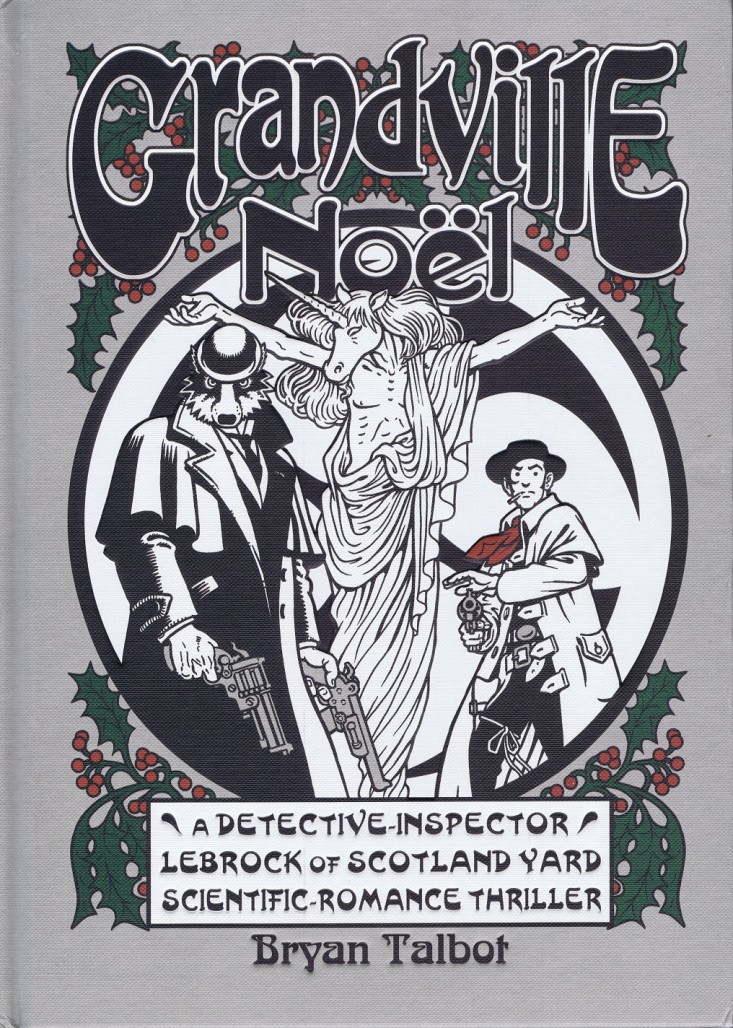 Pádraig Ó Méalóid: I had been meaning to ask you, before I started reading this one, if there were going to be any further Grandville books after this, but by the end of it you’ve several trailing story threads that I imagine might take a few more books to sort out. What can you tell me?
Pádraig Ó Méalóid: I had been meaning to ask you, before I started reading this one, if there were going to be any further Grandville books after this, but by the end of it you’ve several trailing story threads that I imagine might take a few more books to sort out. What can you tell me?
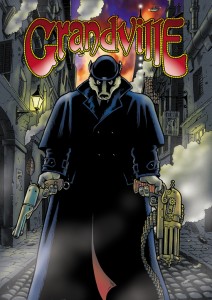 Bryan Talbot: Although the books are stand-alone stories and can be read individually, you will have noticed that each takes place a month after he previous one, and there has been a story arc gradually building that comes to fruition in volume five. I scripted it over two years ago now, though have been polishing it since. It’s much longer that the other stories, about 160 pages, and will probably be the final one. If I write any more stories set in the world of Grandville, they’ll be drawn in a different style. The fifth, although still containing some of the humour of the other books, is definitely the darkest story and features one of the vilest villains in the history of crime fiction. Characters from earlier volumes have cameo roles and we finally meet the execrable Chief Inspector Stoatson, mentioned in all the books since the second one but never seen. We also discover, for the first time, [Detective Inspector] LeBrock‘s backstory and are introduced to his mentor, the great detective who trained him up. I’m currently drawing Mary*’s 3rd graphic novel, but will start work on the 5th Grandville when I finish that, in summer.
Bryan Talbot: Although the books are stand-alone stories and can be read individually, you will have noticed that each takes place a month after he previous one, and there has been a story arc gradually building that comes to fruition in volume five. I scripted it over two years ago now, though have been polishing it since. It’s much longer that the other stories, about 160 pages, and will probably be the final one. If I write any more stories set in the world of Grandville, they’ll be drawn in a different style. The fifth, although still containing some of the humour of the other books, is definitely the darkest story and features one of the vilest villains in the history of crime fiction. Characters from earlier volumes have cameo roles and we finally meet the execrable Chief Inspector Stoatson, mentioned in all the books since the second one but never seen. We also discover, for the first time, [Detective Inspector] LeBrock‘s backstory and are introduced to his mentor, the great detective who trained him up. I’m currently drawing Mary*’s 3rd graphic novel, but will start work on the 5th Grandville when I finish that, in summer.
[*That’s Dr Mary M Talbot, Bryan Talbot’s wife, with whom he collaborated on Dotter of Her Father’s Eyes, and co-collaborated with on Sally Heathcote: Suffragette, along with Kate Charlesworth, both of which are recommended.]
PÓM: I notice that the human characters – the ‘doughfaces’ in the story – seem to be getting restless, and coming more to the fore, in the 3rd and 4th volumes. Will we be seeing more of them in the last volume, too?
BT: They’ll be reverting to background characters, as in the 1st book. It’s in Grandville Noël where they come centre stage and, by the end, there is some kind of resolution.
PÓM: As I was rereading my way through the Grandville books, I was wondering how many different animals you had included in them. Have you any idea what sort of number you’ve done?
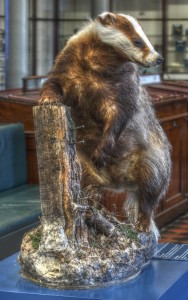
PÓM: How do the Grandville books do on the European market, particularly in France, where they’re up against work which they’re sometimes drawn from?
BT: I’m very disappointed with the French Publisher of Grandville, Bragelonne. They are primarily a publisher of horror, SF and fantasy prose and I don’t think they really pushed the books. They don’t even have a booth at Angouleme. The books went into profit (I know as I regularly receive royalty payments from them) but obviously they didn’t make as big a profit as they’d like, as they only published the first two volumes. This, despite Grandville Mon Amour winning the prize given by French railway industry, the Prix SNCF, for best graphic novel, voted for by the rail-traveling public and all the many French reviews of both books, which were universally positive. In Spain and Germany, though, they seem to be quite popular, Noël coming out both places next year. I think a Finnish edition of the first book is forthcoming too. It’s also been published in Serbia, Greece, the Czech Republic and Italy.
PÓM: You mention a third book by your wife, Dr Mary Talbot. Can you tell me anything about this, or is it still under wraps?
BT: As it’s only going to be published in 2016, we’re keeping quiet about it at the moment. Primarily because we think someone else might pinch the idea, research the subject, and produce a graphic novel of their own before then! Suffice to say that it’s another historical story about a strong female protagonist, one that most UK readers will never have heard of.
PÓM: There’s a very brief mention of a cataclysmic event that helped shaped how things are in the Grandville world, in the fourth book. This seems to me to throw you into the same general Wold-Newton Universe concept that Philip José Farmer initiated, and which also informs Alan Moore’s League of Extraordinary Gentlemen books. That, plus the fact that the aircraft that we’re constantly seeing in the air over Paris look very like the ones we see in your Luther Arkwright stories, makes we wonder if there’s a larger ‘Bryan Talbot Universe’ setting behind all your work. Or is this just something I’m over-thinking?
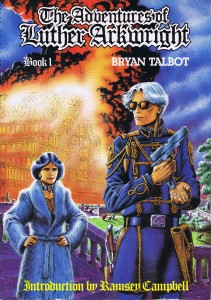 BT: I never actually got around to reading the Farmer books but, yes, the cataclysmic event is basically a reference to Firefrost. In the Arkwright story, where it’s made clear that its arrival on earth sent ripples affecting reality through all the alternative time streams. I did have the intention on doing a story based on it sometime but, as I said earlier, the 5th is now probably going to be the last of the series. The iron flying machines are common to Arkwight and Grandville, though in the former, there is only one type, a military vessel, and only made by one of the countries involved. In Grandville, they are public and private skyships of various designs. Vaguely inspired by Jules Verne and Albert Robida, I use them because every other steampunk story uses airships.
BT: I never actually got around to reading the Farmer books but, yes, the cataclysmic event is basically a reference to Firefrost. In the Arkwright story, where it’s made clear that its arrival on earth sent ripples affecting reality through all the alternative time streams. I did have the intention on doing a story based on it sometime but, as I said earlier, the 5th is now probably going to be the last of the series. The iron flying machines are common to Arkwight and Grandville, though in the former, there is only one type, a military vessel, and only made by one of the countries involved. In Grandville, they are public and private skyships of various designs. Vaguely inspired by Jules Verne and Albert Robida, I use them because every other steampunk story uses airships.
PÓM: Do you have any idea when we can expect to see that fifth and final Grandville volume?
BT: I’m hoping 2017.
PÓM: That’s a long wait! You already mentioned the book with Mary, but is there anything else we need to know about, to fill up the lonely days while we wait – more Luther Arkwright, maybe?
BT: ‘Fraid not. Not many people realise what a long slog it is, producing a graphic novel. These books take a long time, especially in the sort of style I use for Grandville, which takes up to 4 days per page. The fifth volume is going to be 160 pages. That’s nearly two years’ work, more if I’m away a lot. Plus, big publishers like Cape ideally want the finished books up to a year before they publish them, so they sit around for months before being released. One reason for this is so that they meet the scheduled publication dates. Another is so their reps can show the books around to retailers several months in advance to create interest. So it may be an even longer wait than that! I do actually have a folder full of notes for a possible Arkwright story, and have done for several years, but it’s simply not gelled. Perhaps after I finish Grandville.



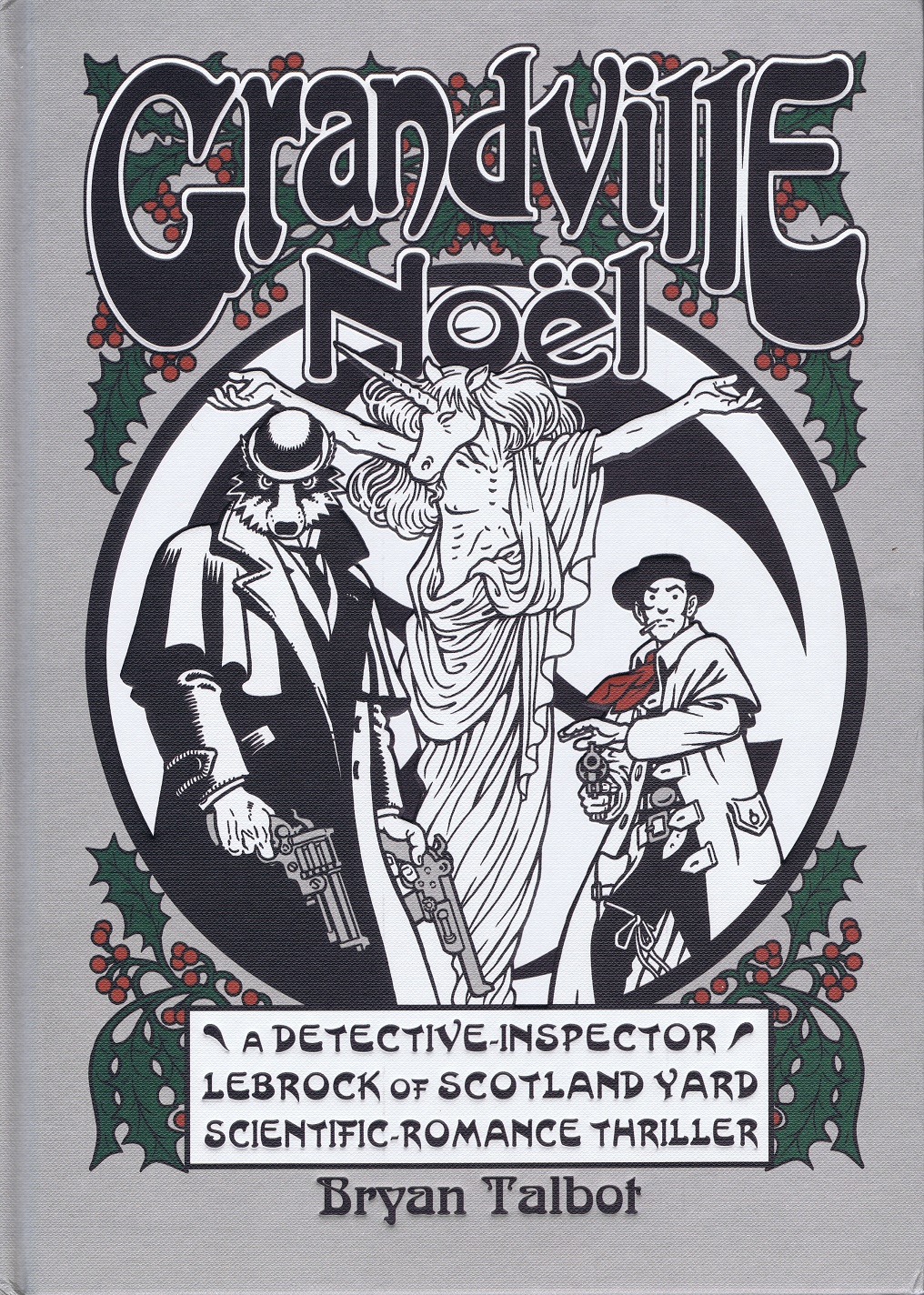
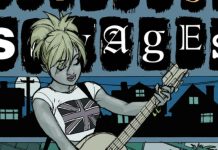
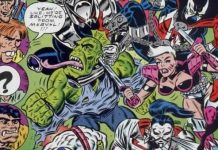





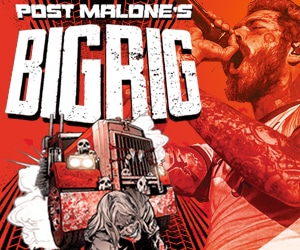

Comments are closed.